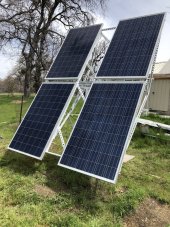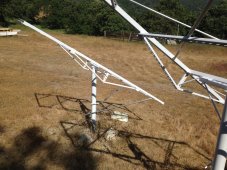jsmetalcraft
New Member
- Joined
- Jul 7, 2021
- Messages
- 185
I have been studying about east/west facing arrays. For me I have settled that an Eastern array would be advantageous, ground mount. In running the simulations it appears that having them on an adjustable AZ may be beneficial. Initial thoughts were to go 45* each side of 180 (135 for East and 225 for West). But there seems to be some gain by adjusting the Western array between Winter and Summer.
I will build my own mount so the cost would be reasonable. Any thoughts as to worth while trying to collect more of the late Summer sun?
I will build my own mount so the cost would be reasonable. Any thoughts as to worth while trying to collect more of the late Summer sun?








